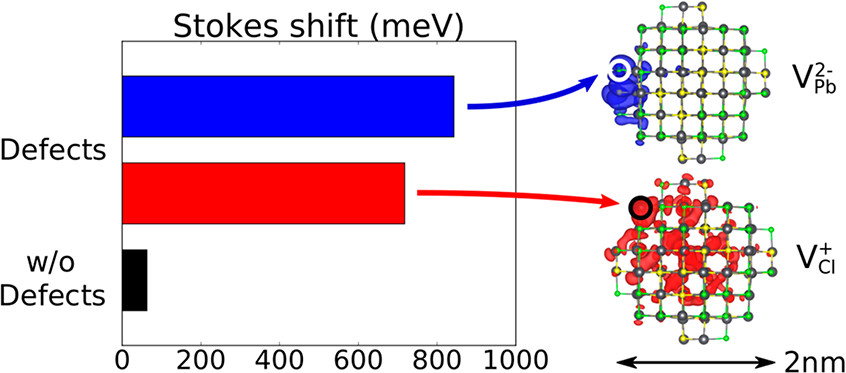Origins of the Stokes Shift in PbS Quantum Dots: Impact of Polydispersity, Ligands, and Defects
슈퍼관리자
2021-05-21
Origins of the Stokes Shift in PbS Quantum Dots: Impact of Polydispersity, Ligands, and Defects
-
Authors :
Y Liu, D Kim, OP Morris, D. Zhitomirsky, JC Grossman
-
Journal :
ACS Nano
-
Vol :
12
-
Page :
2838
-
Year :
2018

Abstract
Understanding the origins of the excessive Stokes shift in the lead chalcogenides family of colloidal quantum dots (CQDs) is of great importance at both the fundamental and applied levels; however, our current understanding is far from satisfactory. Here, utilizing a combination of ab initio computations and UV–vis and photoluminescence measurements, we investigated the contributions to the Stokes shift from polydispersity, ligands, and defects in PbS CQDs. The key results are as follows: (1) The size and energetic disorder of a polydisperse CQD film increase the Stokes shift by 20 to 50 meV compared to that of an isolated CQD; (2) Franck–Condon (FC) shifts increase as the electronegativities of the ligands increase, but the variations are small (<15 meV). (3) Unlike the aforementioned two minor factors, the presence of certain intrinsic defects such as VCl+ (in Cl-passivated CQDs) can cause substantial electron density localization of the band edge states and consequent large FC shifts (100s of meV). This effect arising from defects can explain the excessive Stokes shifts in PbS CQDs and improve our understanding of the optical properties of PbS CQDs.















